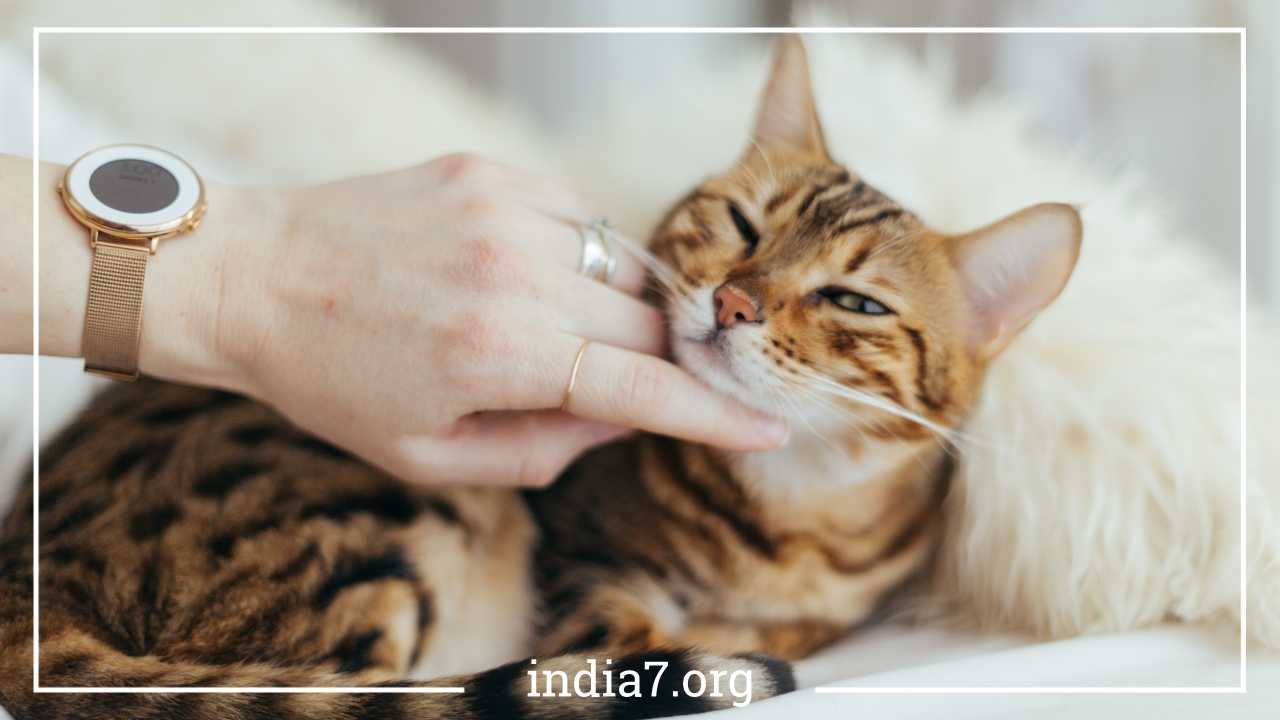Caring for Cats: A Comprehensive Guide to Cat Care and Ownership

Caring for Cats
Cats have long held a special place in the hearts and homes of people around the world. These independent and often enigmatic creatures have become one of the most popular choices for pets. Whether you’re a seasoned cat owner or considering bringing a feline friend into your life for the first time, it’s important to understand the responsibilities and joys that come with taking care of a cat.
This comprehensive guide will cover everything you need to know about cat care, from selecting the right breed to ensuring a long and healthy life for your beloved feline companion.
1. Choosing the Right Cat Breed
Cats come in a wide variety of breeds, each with its own unique characteristics, temperament, and appearance. Before bringing a cat into your home, it’s crucial to consider which breed aligns best with your lifestyle and preferences. Here are some popular cat breeds and their distinct qualities:
Persian Cats: Persian cats are known for their luxurious long fur and calm, gentle nature. They require regular grooming to maintain their coat’s health and appearance.
Siamese Cats: Siamese cats are vocal, affectionate, and highly social. They thrive on interaction and often form strong bonds with their owners.
Maine Coon Cats: Maine Coon cats are large, friendly, and known for their intelligence. They are often described as “gentle giants” and make excellent family pets.
Ragdoll Cats: Ragdolls are known for their docile and laid-back personalities. They are affectionate and enjoy being held and cuddled.
Bengal Cats: Bengal cats are active and playful with a distinctive spotted coat. They require plenty of mental and physical stimulation.
2. Financial Considerations
Owning a cat comes with financial responsibilities that go beyond the initial adoption fee. Cats require ongoing care, including food, veterinary visits, grooming supplies, and other essentials. Here are some financial considerations to keep in mind:
Food: High-quality cat food is essential for your cat’s health. The cost of cat food can vary depending on the brand and type (dry or canned). It’s essential to choose a diet that meets your cat’s nutritional needs.
Veterinary Care: Regular veterinary check-ups are crucial to your cat’s well-being. Cats may need vaccinations, preventive medications, and treatment for illnesses or injuries.
Grooming: Long-haired breeds like Persians require regular grooming, which may include brushes, combs, and professional grooming services.
Litter and Accessories: You’ll need to provide a litter box, litter, food and water dishes, toys, scratching posts, and a bed for your cat.
Emergency Fund: It’s wise to set aside an emergency fund for unexpected veterinary expenses, such as accidents or sudden illnesses.
3. Feeding Your Cat
Proper nutrition is a cornerstone of cat care. Cats are obligate carnivores, which means they require a diet rich in animal-based protein. Here are some key considerations for feeding your cat:
Age-Appropriate Diet: Cats have different dietary needs at various life stages. Kittens, adult cats, and senior cats each require specific nutrients. Choose cat food formulated for your cat’s age.
Wet vs. Dry Food: Both wet and dry cat food have their advantages. Wet food can help with hydration, while dry food can assist in dental health. Some cat owners choose to provide a combination of both.
Portion Control: Overfeeding can lead to obesity, which can have serious health consequences for your cat. Follow feeding guidelines provided on the cat food packaging and adjust portions based on your cat’s age, activity level, and weight.
Fresh Water: Always ensure your cat has access to clean, fresh water. Proper hydration is essential for their overall health.
Avoid Toxic Foods: Some human foods, such as chocolate, onions, and grapes, can be toxic to cats. Keep these foods out of reach.
4. Cat Health and Veterinary Care
Regular veterinary care is essential to keep your cat healthy and catch any potential health issues early. Here are some key aspects of cat health and veterinary care:
Vaccinations: Cats require vaccinations to protect against common diseases like rabies, feline distemper, and feline leukemia. Consult with your veterinarian to create a vaccination schedule.
Parasite Prevention: Cats are susceptible to internal and external parasites. Regular preventive treatments for fleas, ticks, worms, and heartworms are crucial.
Spaying and Neutering: Unless you plan to breed your cat responsibly, spaying (for females) and neutering (for males) is essential to prevent unwanted litters and provide health benefits.
Dental Care: Dental hygiene is vital for your cat’s overall health. Brush your cat’s teeth regularly and provide dental treats or toys to help reduce plaque and tartar buildup.
Recognizing Signs of Illness: Familiarize yourself with common signs of illness in cats, such as changes in appetite, behavior, or litter box habits, as well as vomiting, diarrhea, or lethargy. If you notice any unusual symptoms, consult your veterinarian promptly.
5. Environmental Enrichment
Cats are intelligent and curious animals that need mental and physical stimulation to thrive. Enriching your cat’s environment can prevent boredom and behavioral problems. Here are some tips for providing enrichment:
Toys: Cats enjoy toys that mimic prey, such as feather wands, laser pointers, and interactive puzzle toys. Rotate toys to keep your cat engaged.
Scratching Posts: Cats have a natural instinct to scratch. Provide scratching posts to satisfy this behavior and prevent damage to furniture.
Cat Trees: Cat trees or condos offer multiple levels for climbing, scratching, and resting. They can also serve as cozy perches for observing their surroundings.
Interactive Play: Spend quality time playing with your cat using toys like fishing rod toys or remote-controlled devices. This strengthens your bond and keeps them active.
Outdoor Enclosures: If possible, create a safe outdoor enclosure or provide supervised outdoor time to allow your cat to explore and experience the outdoors safely.
6. Grooming and Hygiene
Maintaining your cat’s cleanliness is essential for their health and comfort. Grooming involves brushing, bathing (if necessary), and regular hygiene tasks:
Brushing: Brushing your cat’s coat removes loose hair, reduces shedding, and helps prevent matting. It also promotes bonding between you and your cat.
Bathing: Most cats are excellent self-groomers and do not require frequent baths. However, some long-haired breeds may benefit from occasional baths. Be sure to use a cat-specific shampoo.
Ear Cleaning: Check your cat’s ears regularly for dirt, wax buildup, or signs of infection. Clean them with a veterinarian-recommended ear cleaner if needed.
Nail Trimming: Regular nail trimming prevents overgrown, sharp claws. Use cat-specific nail clippers and be cautious not to cut too close to the quick.
Eye Cleaning: Wipe away any discharge from your cat’s eyes with a soft, damp cloth. If you notice persistent eye issues, consult your veterinarian.
7. The Litter Box
Maintaining a clean and accessible litter box is crucial to keeping your cat happy and your home odor-free. Here are some litter box tips:
Location: Place the litter box in a quiet, easily accessible location. Cats prefer privacy and may avoid using the box if it’s in a noisy or high-traffic area.
Scoop Regularly: Scoop waste from the litter box daily to keep it clean and inviting for your cat.
Litter Type: Experiment with different types of cat litter (clay, clumping, silica, etc.) to find the one your cat prefers. Some cats are sensitive to scented litters.
Litter Box Size: Choose a litter box that accommodates your cat’s size comfortably. Larger cats may require larger boxes.
Cleaning: Empty the litter box completely and clean it with mild soap and water regularly. Replace the litter as needed.
8. Indoor vs. Outdoor Cats
Deciding whether to keep your cat indoors or allow them outdoor access is a significant consideration in cat care. Each option has its pros and cons:
Indoor Cats: Keeping your cat indoors provides safety from outdoor hazards such as traffic, predators, and diseases. However, it’s essential to provide indoor enrichment to prevent boredom.
Outdoor Cats: Allowing your cat outdoor access can satisfy their natural instincts to explore and hunt. However, it exposes them to various risks, including accidents and diseases. If you choose this option, consider a cat enclosure or “catio” to keep them safe.
Indoor/Outdoor Cats: Some cat owners opt for a compromise, allowing their cats supervised outdoor time or access to a secured outdoor enclosure.
9. Behavior and Training
Understanding your cat’s behavior and providing appropriate training can help prevent common issues and strengthen your bond. Here are some behavior and training tips:
Litter Box Training: Most kittens instinctively use a litter box. If issues arise, consult with your veterinarian to rule out medical problems and consider positive reinforcement techniques.
Scratching Behavior: Cats scratch to mark territory and sharpen their claws. Provide scratching posts and redirect their behavior when they scratch inappropriate surfaces.
Positive Reinforcement: Reward good behavior with treats, affection, and praise. Avoid punishment, as it can create fear and anxiety in your cat.
Socialization: Socialize kittens early to ensure they are comfortable around people and other pets. Gradual exposure to new experiences can reduce fear and anxiety.
Consult a Professional: If you encounter persistent behavior problems, consult with a professional animal behaviorist or trainer for guidance.
10. Traveling with Your Cat
Whether for a vet visit or a vacation, traveling with your cat requires preparation and patience. Here are some tips for stress-free travel with your feline friend:
Carrier Training: Get your cat accustomed to their carrier well in advance of travel. Leave it open in your home and place treats or toys inside to create positive associations.
ID and Microchipping: Ensure your cat has proper identification, including a collar with an ID tag and a microchip with up-to-date contact information.
Secure the Carrier: When traveling, secure the carrier in your vehicle to prevent it from moving around or tipping over.
Familiar Comforts: Bring familiar items, such as your cat’s blanket or a favorite toy, to provide comfort and familiarity during the journey.
Regular Breaks: If traveling long distances, schedule breaks to offer food, water, and litter box access for your cat.
11. Special Considerations for Kittens
Kittens are adorable bundles of energy and curiosity, but they require specific care and attention. Here are some considerations when raising a kitten:
Feeding: Kittens require frequent feedings, usually every 2-3 hours in the early weeks. Transition to a regular feeding schedule as they grow.
Socialization: Socialize kittens by exposing them to various people, experiences, and environments to help them become well-adjusted adults.
Teething: Kittens teethe, and they may chew on objects. Provide appropriate teething toys to prevent damage to household items.
Litter Training: Be patient with litter box training. Place kittens in the litter box after meals and when they wake up, and reward them when they use it correctly.
Play and Exercise: Kittens have boundless energy and need plenty of playtime and mental stimulation. Interactive toys and play sessions are essential.
12. Health and Medical Care for Senior Cats
As your cat ages, their needs will change. Senior cats require special attention to ensure their health and comfort. Here are some considerations for senior cat care:
Regular Vet Visits: Schedule more frequent veterinary check-ups for your senior cat to detect age-related health issues early.
Dietary Changes: Adjust your cat’s diet to meet their changing nutritional needs. Senior cat food is formulated to support their health.
Joint Health: Arthritis and joint issues are common in senior cats. Provide soft bedding and consider supplements or medications as recommended by your veterinarian.
Dental Care: Dental problems can be more prevalent in older cats. Continue regular dental care, including brushing and dental treats.
Mobility: Ensure that your home environment is senior-friendly, with easy access to food, water, and litter boxes. Consider ramps or steps to assist with mobility.
13. The Benefits of Cat Ownership
Cats offer numerous rewards and benefits to their owners. Here are some of the positive aspects of cat ownership:
Companionship: Cats are affectionate and can form deep bonds with their owners. Their presence can provide comfort and reduce stress.
Stress Reduction: Petting a cat can lower stress levels and promote relaxation. The act of caring for a cat can also bring joy and purpose to your life.
Entertainment: Cats are playful and entertaining, often engaging in antics that make you smile and laugh.
Independence: Cats are relatively low-maintenance pets and can adapt to various living situations, making them suitable for people with busy lifestyles.
Unconditional Love: Cats offer unconditional love and acceptance, providing a sense of emotional fulfillment.
14. Conclusion
Caring for a cat is a rewarding experience that brings joy, companionship, and a sense of responsibility into your life. From choosing the right breed to providing proper nutrition, veterinary care, and enrichment, there are many aspects to consider when welcoming a cat into your home. By understanding your cat’s needs, providing a loving environment, and maintaining their health and well-being, you can enjoy a fulfilling and lasting relationship with your feline companion. Remember that every cat is unique, and it’s essential to tailor your care to their individual personality and requirements. With dedication and love, your cat can be a cherished member of your family for many years to come.



